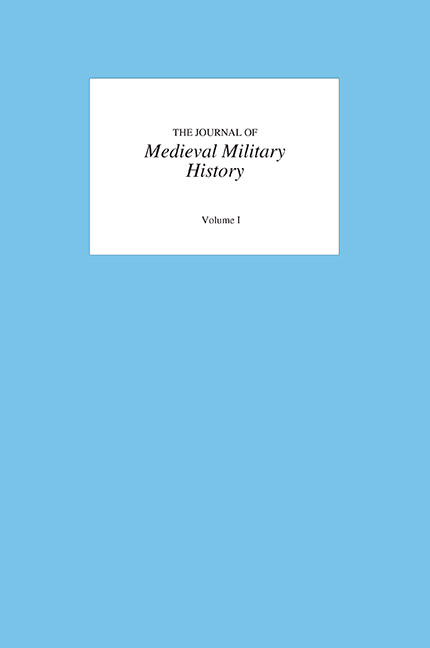Book contents
- Frontmatter
- Contents
- Editor's Introduction
- 1 The Vegetian ‘Science of Warfare’ in the Middle Ages
- 2 Battle Seeking: The Contexts and Limits of Vegetian Strategy
- 3 Italia – Bavaria – Avaria: The Grand Strategy behind Charlemagne's Renovatio Imperii in the West
- 4 The Composition and Raising of the Armies of Charlemagne
- 5 Some Observations on the Role of the Byzantine Navy in the Success of the First Crusade
- 6 Besieging Bedford: Military Logistics in 1224
- 7 ‘To aid the Custodian and Council;’ Edmund of Langley and the Defense of the Realm, June – July 1399
- 8 Flemish Urban Militias against the French Cavalry Armies in the Fourteenth and Fifteenth Centuries
3 - Italia – Bavaria – Avaria: The Grand Strategy behind Charlemagne's Renovatio Imperii in the West
Published online by Cambridge University Press: 12 September 2017
- Frontmatter
- Contents
- Editor's Introduction
- 1 The Vegetian ‘Science of Warfare’ in the Middle Ages
- 2 Battle Seeking: The Contexts and Limits of Vegetian Strategy
- 3 Italia – Bavaria – Avaria: The Grand Strategy behind Charlemagne's Renovatio Imperii in the West
- 4 The Composition and Raising of the Armies of Charlemagne
- 5 Some Observations on the Role of the Byzantine Navy in the Success of the First Crusade
- 6 Besieging Bedford: Military Logistics in 1224
- 7 ‘To aid the Custodian and Council;’ Edmund of Langley and the Defense of the Realm, June – July 1399
- 8 Flemish Urban Militias against the French Cavalry Armies in the Fourteenth and Fifteenth Centuries
Summary
Avaria, the land of the Avars, sometimes known in the Carolingian sources by its Roman name, Pannonia, became the southeastern frontier of Charlemagne's sprawling empire in the closing decade of the eighth century following a series of spectacular campaigns. Einhard, Charles’ younger contemporary and biographer, wrote that “The (Avar) war was the most important which Charlemagne ever fought, except the one against the Saxons,” stressing that Charlemagne “waged it with more vigour than any of the others and with much greater preparation.” It is not difficult to understand why careful planning would have been necessary for the conquest of Avaria. The Carpathian Basin, a vast region of the middle Danube watershed consisting of flat and rolling country between the eastern Alps, the Carpathians, and the Balkans, was ideally suited for the tactics of mounted archers such as the Avars. This region was an open frontier, an ecological and cultural transition zone between the worlds of settled farmers and the nomads of the Eurasian steppes, who frequently settled there and who used their military skills to prey upon neighboring sedentary populations. Bands of predatory mounted archers launched pillaging raids against defenseless villages, demanded tribute from cowed lay and ecclesiastical officials, and served as mercenaries in the conflicts between various western European magnates.
In light of Einhard's remarks plus the formidable reputation that steppe peoples (Huns, Avars, and, later, Hungarians and Mongols) had as warriors, it came as a surprise when Rudolf Schieffer asserted in his plenary address to the annual meeting of the Association of German Medievalists in Leipzig, in March 1998, that Charlemagne's “war against the Avars in Pannonia was for the most part a rush for booty (Beutezug) with a rather half-hearted intent of conquest.” To prove his point, Schieffer cited Timothy Reuter, who has insisted for some time that military activity in early medieval Germany consisted of small-scale raids for pillage, not real war. Reuter's thesis, however, contains dubious assumptions and has not been universally accepted. What is more, Schieffer's presentation did not really concern itself with Charlemagne's Avar war per se, to which he devoted only a single sentence. Rather, he introduced Reuter's conclusions concerning Carolingian warfare to support his overall thesis that Charlemagne was an opportunist, not a long-range planner. In his view, the king of the Franks was simply a leader whose cunning allowed him to seize opportunities whenever and wherever they arose.
- Type
- Chapter
- Information
- Journal of Medieval Military HistoryVolume I, pp. 43 - 60Publisher: Boydell & BrewerPrint publication year: 2002

